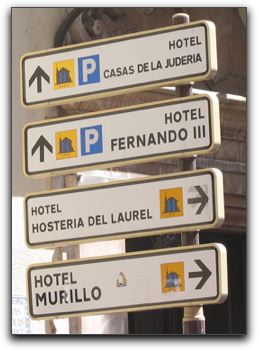
The local tourist events magazine “welcome&olé!” contained this unbelievable little story (quoted here in its totality):
The Wikipedia article about Seville mentions that it competes with Córdoba for hottest city in Europe. True indeed. Due to the extreme and debilitating heat, we decided to “do Seville” in one day and head north for cooler weather. So we carefully planned our activities for the day on our map. We got lost entering town because, the map’s orientation had east at the top. Ah, for the benefits of a Standard User Interface. Fortunately, we realized that we were on Paseo de Christóbal Colón, the largest and broadest street named for him we had seen, only a few blocks away from the first of our destinations. Lucky again! We were able to park in a legal spot that only required that we return every 2 hours to put more money in the meter, and set out on our way.
Debbie’s interest in chocolate has led us to explore the Americas in a new way. We walked right past the Cathedral, the largest in Spain and the third largest in Europe, to the General Archive of the Indies where a group of visiting Canadians took our portrait. We went upstairs and glanced in at the hall filled with archival boxes where Mark photographed only to learn from the guard it was not permitted. It’s unclear why not:
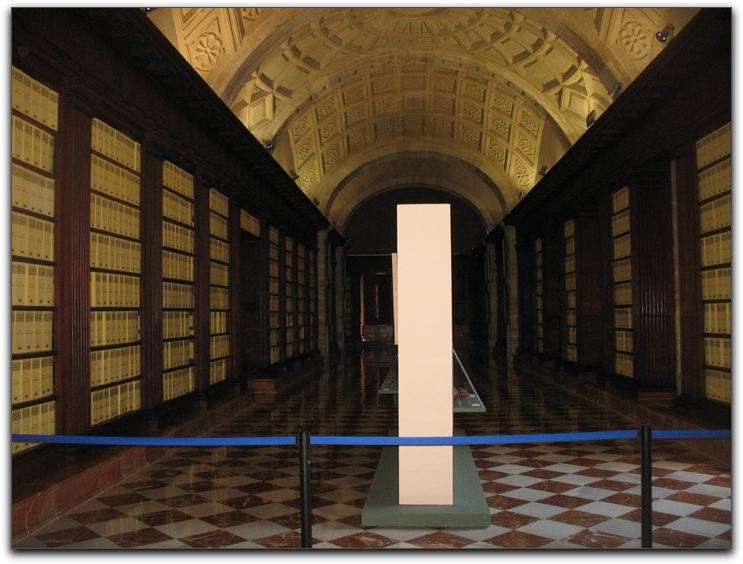
Leaving the Archives we confronted these tourists and signs. A long line led into the Cathedral so we went in the direction of “Hotel Casas de la Juderia”.

The local tourist events magazine “welcome&olé!” contained this unbelievable little story (quoted here in its totality):
Get real!Barrio De Santa Cruz
A Stroll Through the Former Jewish Quarter
Its narrow, winding streets run silently along the length of the now-disappeared Sephardic wall. Full of curious little stories and legends, this emblematic zone of Seville exudes an air of mysticism which can be felt in such places as the convent founded by Santa Teresa or the house in which the famous Seville painter Murillo lived.Continuing along Callejón del Agua, or Water Alley, next to the popular Calle Vida, or Life Street, we find Pimienta Street and Susona Street, the last of these being the site of a tragic legend. The story tells how towards the end of the 14th century there was an important Jewish figure named Diego Susón, who was the ringleader of a Jewish rebellion which sought to take control of the city. His beautiful daughter Susona was in love with a christian [sic] knight, and she betrayed her father to her lover, provoking his execution.
Tormented by her actions, Susona requested in her will that her head be separated from her body folloing her death. It subsequently hung for several years from the door of her house, the first in the street which now bears her name. The itinerary continues along Conde de Ibarra Street before entering the less developed part of the Jewish Quarter, San Bartolomé.
…on 4 June 1391 the city erupted. In ensuing riots the Judería was sacked and much property destroyed. Part of the community converted…. The synagogues not burnt out were converted to churches or to more mundane uses.
What did we find? On Livíes street
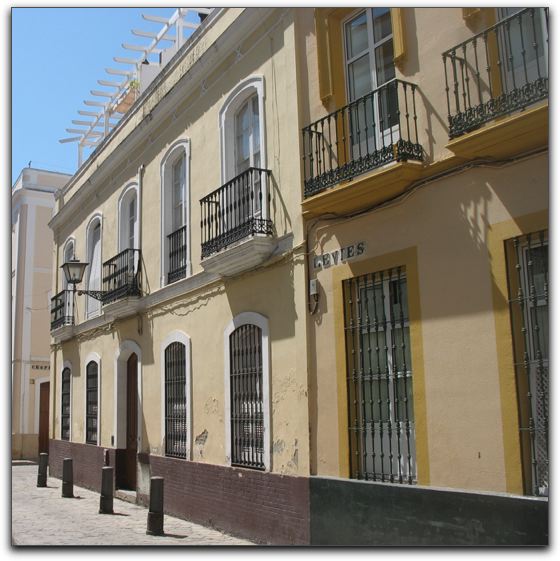
which, it is suggested means “Levy’s” or “Levite’s” street:

on the side of which sports a map indicating what’s really important in Seville
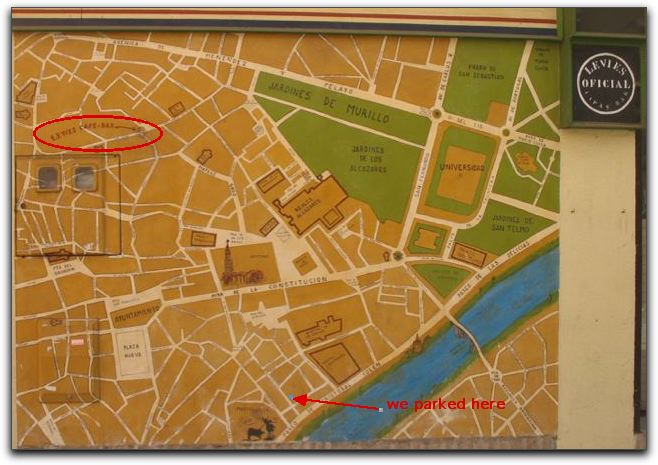
Mark was intrigued by the possibility of someone who might have been a Jew, Christopher Columbus, being buried in a Cathedral so he went back to examine. This is the sepulcher of Christopher Columbus, taken in very dim available light and then modified (and made visible and colorful) in iPhoto!
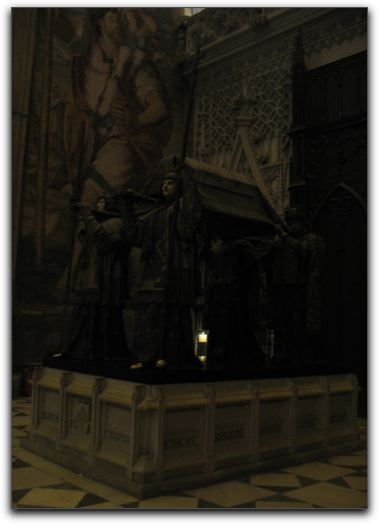
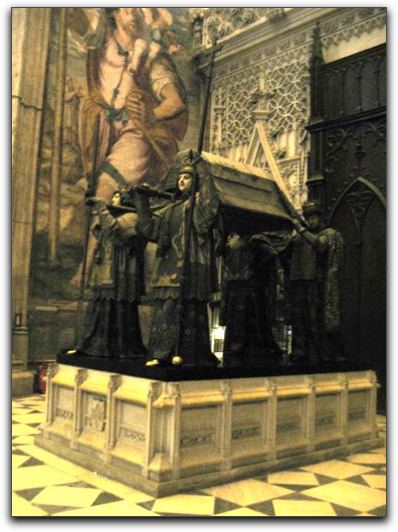
In our reading we had learned in Jane Gerber’s book The Jews of Spain that King Ferdinand III
patronized scholars and promoted the use of the language [Hebrew] after he reconquered Seville [from the Moors]. He encouraged Jews to contribute their talents to this and other enterprises of the state. …the multilingual inscription on his tomb in the chapel of the cathedral of Seville—Arabic, Hebrew, Castilian—symbolized his vision of his kingdom as the home of all three faiths.Similarly, we had seen an old photograph of the Keys to the City.
After the Christian reqonquest of Seville in 1248, Jews presented the symbolic keys… to Ferdinand III with the inscription (in Hebrew, Latin, and Castilian) “God will open, then the king will enter.”We had hoped to see these items and take our own photographs. But no-one we asked, either at the Cathedral or the other tourist offices in Seville knew anything about them.
However, even when we went to the special section of town that specializes in the production and sale of ceramics we could not find one. Crossing the Puente de Triana to the far side of the Guadalquivir, into the neighborhood of Triana, we explored in a major center of ceramic production along Antilano Campos and Alfarería streets.
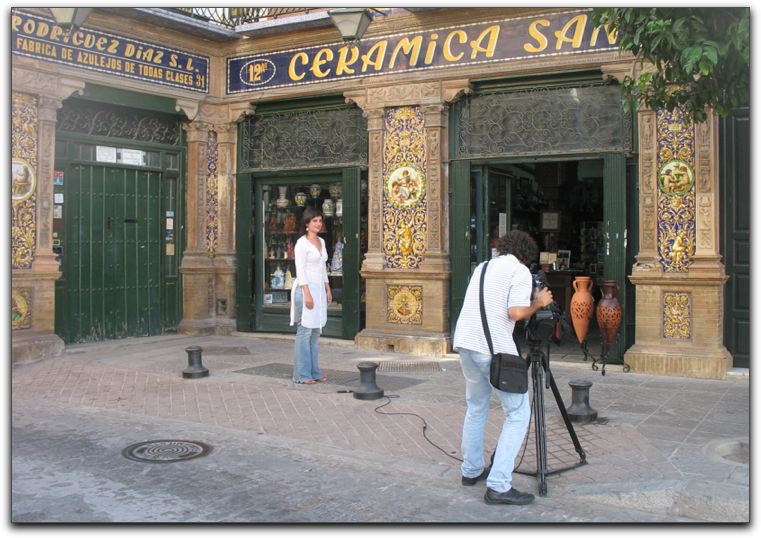
We went from shop to shop, one next door to the other and asked. The vast majority of people had never heard the word. Only one woman knew what we wanted. She showed us a catalog of a company that makes all kinds of high-end ceramic items… and they sell a commemorative, expensive boxed-set of mancerinas. She gave us the catalog and, disappointed, we went on our way.
We had learned that there were more local sweets produced by the convents in the area. We finally located one of the prettiest plazas (Plaza del Cabildo) we had seen, and made our little purchases at the small shop called El Torno.
looking in:

from the inside:

Of all the cities we’ve visited, Seville seems to be the most devout. There appear to be more ceramic depictions of saints on the walls along the streets in Seville, than in any other city.

What we found creepy, however, were ceramic representations of penitents. The big ones are about 10cm tall. Where do you put these? On the mantle?
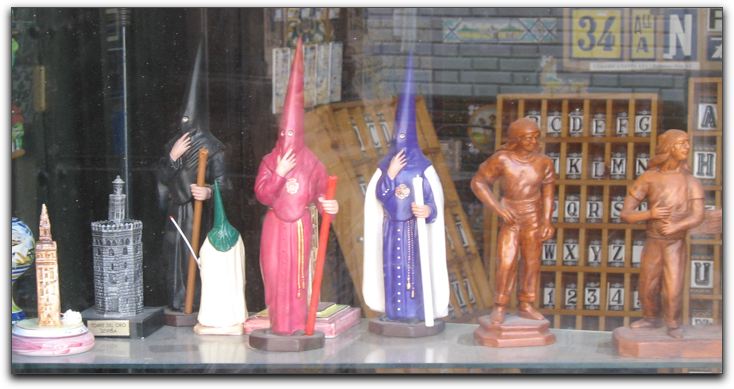

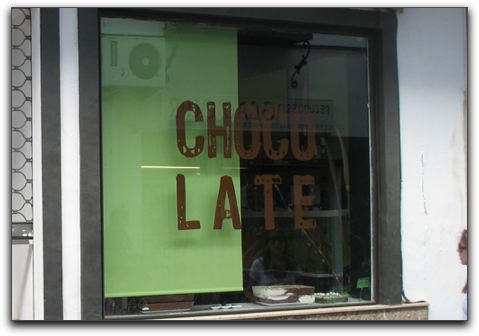
It turns out that we had parked our van barely 10 meters from The Macarena. While he does not like to do “formation dances” at parties, Mark could not control himself.


Mustard and white is a favorite color theme in Andalucía.
Mark was pleased to see normal life on the roof of a nearby building…
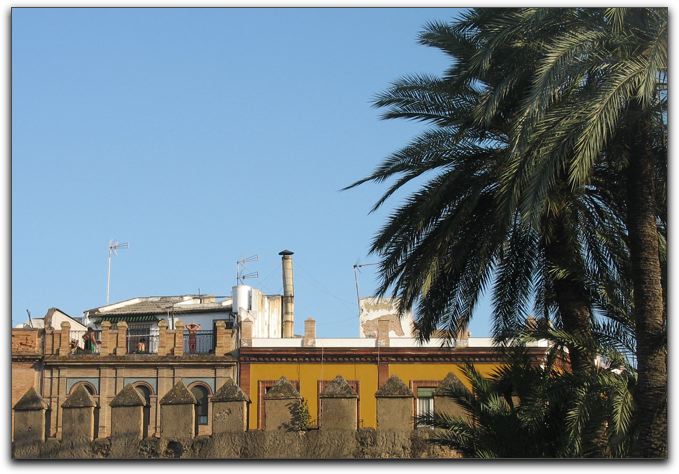
the boys are busy playing in what seems to be a swimming pool.
We may need to return to the city. There may be more chocolate information available only here. In addition, we’d like to see those tri-lingual inscriptions.
We headed out of town aiming north for Extramadura. Finding our planned campsite turned out to be an adventure in itself, as we saw campsite signs at each end of the 500 meter strip of the road running through the town it was supposed to be in, but we could not find the actual turn-off. When we stopped for gas and asked about the campsite, we learned that it had closed down a few years earlier. We drove on for another hour or so along the two-lane road, rather than the highway, to make sure we did not miss a sign for the next campsite… we finally arrived a bit after dark. Enjoying the cooler air, we settled in to rest up for the next day.